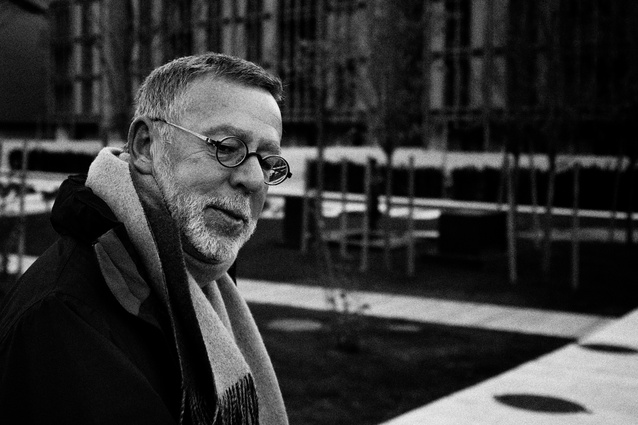Event review: Christchurch Conversations
“There is no such thing as a sustainable building… not if sustainability means enabling something to continue forever,” says Bill Reed to 250 people packed into Christchurch’s Tūranga. Hearing this from the founding director of the United States Green Building Council and co-founder of the Leadership in Energy and Environmental Design (LEED) green building rating system is destabilising at best.
A former architect, and principal of the Regenesis Group, Reed has achieved remarkable results on sustainability projects across the world. He thinks architects here need to step up: that they can go deeper by practising ‘regeneration’, the next shift for sustainability.
The practice of regeneration applies the principles of permaculture (a philosophy co-developed by environmental designer David Holmgren and researcher Bill Mollison in Australia in 1978) to more than agriculture. While permaculture is about recognising underlying patterns in nature, regeneration extends the picture further to include ourselves, we humans, as well as our built environments, as parts of these systems. Regenerative design asks designers to identify and care for systems where they live and work, to co-develop with their surrounding environments – both the natural and the built.
What does that look like? The Brattleboro Co-op, in Vermont, USA, engaged Regenesis when it wanted to build a new, LEED-accredited building. However, in the early stages, it became clear that even all the potential energy saved in an accredited building could not outweigh the amount of energy involved in transporting the food sold in the store. Looking at the patterns of the local area, it was observed that, although the stakeholders valued local food, the nearby farms were not being utilised.
Regenesis suggested a programme shift, the promotion of local agriculture through its market and a vegetable garden and kitchen used to teach people in the community how to grow and make their own food. Today, it is a successful food hub for the town and wider region because individuals, a community of people, were prepared to change their habits of consumption.
With an ‘ecological emergency’ announced by councils and local authorities across New Zealand, a grassroots change like that at Brattleboro is what is needed. Britain has pledged net-zero greenhouse-gas emissions by 2050, and it is probable other countries will follow, but real change beyond symbolic gestures is necessary to meet such targets. The Royal Institute of British Architects, too, has joined the chorus of declarations, announcing a net zero built environment action plan to drive higher standards of environmental design. But implementing specific solutions is daunting. What do we actually do?
“Architects are uniquely trained systems thinkers,” says Reed “… programming, community planning, master planning… all these are openings to engage with people.” He contends that these skills can be used to effect change at a local level; instead of responding just to what people say they want, architects can ask what patterns of life they value. He says architects should be offering clients three to five years of engagement to foster these patterns, developing people and relationships to bring about unrealised potential.
At its heart, his message is about personal development. While we, as architects, cannot change client priorities overnight, we can take steps ourselves.
Resonate. Co-create. Ecosystem. Energy. Essence. Spending an hour chatting with Reed is a plunge into mystic-type jargon that he calls ‘woo woo’ language: unsettling, but perhaps that’s the intention. While sounding a bit naïve, it also piques a curiosity, perhaps enough for us to ask ourselves – what do we value? At a fundamental level, we humans long for connection: with each other, and with nature, and with something more.
For some, the philosophy behind regeneration can seem shrouded in new-age puffery but the desire to bring a better relationship with each other and the environment is commendable. The results of the Regenesis practice speak for themselves and indicate that real positive change is occurring.
Back in the crowded Christchurch room, Reed’s message has landed and a wave of palpable energy, emanating from those on board, can be felt across the crowd. Some people are ready to shift sustainability.
Watch the full conversation with Bill Reed here.
This article first appeared in Architecture New Zealand magazine.











